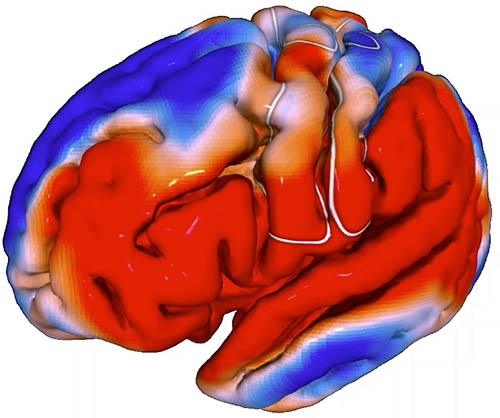10.19.2021
By uscbknpt
Can We Improve Exercise Treatment for Rotator Cuff Rehabilitation?

USC researchers begin study to better understand how physical exercise impacts specific brain areas responsible for pain and muscle use.
THERE ARE 400,000-500,000 ROTATOR CUFF REPAIRS performed in the United States each year.
Nearly 65 to 80 percent of these patients report feeling better with post-surgical exercise treatment, but that improvement can be short-lived, with another 40 to 50 percent of that group later reporting continued pain.
Professor Clinical-Scholar Physical Therapy Lori Michener and Associate Professor Jason Kutch hope to improve those outcomes with a new $45,000 grant, awarded by the Charles D. and Mary A. Bauer Foundation.
In the study, the researchers will investigate the role of central sensitization in less than optimal rotator cuff rehabilitation outcomes.
Central sensitization is an increased response of pain receptors in the brain to stimulation from the body.
It can decrease brain excitability in the areas controlling rotator cuff shoulder muscles, leading to less muscle activity and impaired ability to use the shoulder during functional everyday activities.
We aim to better understand how exercise works in the brain to improve shoulder pain and arm use during daily activities,” Michener said. “Specifically, we want to understand how exercise impacts the brain’s regions that regulate pain and muscle use.”
The researchers will use brain imaging in patients undergoing a 4-week exercise treatment regimen for rotator cuff rehabilitation.
They hope to identify specific brain biomarkers from MRI imaging, which can then be targeted to optimize exercise treatment outcomes in patients with rotator cuff tendinopathy.
Michener joined the USC Division of Biokinesiology and Physical Therapy in 2014, after serving as a faculty member at Virginia Commonwealth University. She is the Division’s director of research and outcomes and the director of research. She also directs the Clinical Biomechanics Orthopedic and Sports Outcomes Research Lab.
Kutch completed his postdoctoral research in biomedical engineering at USC in 2010. He joined the USC Division of Biokinesiology and Physical Therapy as an assistant professor in 2011. He is the director of the Applied Mathematical Physiology Laboratory.
This grant is only the latest the two research faculty members have earned. The Charles D. and Mary A. Bauer Foundation has awarded the researchers more than $175,000 since 2017.
“It is very new to use MRI imaging to personalize exercise for persistent pain,” Kutch said. “It is amazing to have continued Bauer Foundation support as we perform the foundational studies in this area.”

